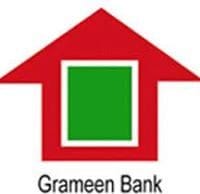NORWAY
An Alternative Bank
It was in those days when they reported the great losses in the Norwegian banking world. Questions were asked how strong was the banking system internally? The reports presented were short of ideas and knowledge on how to improve the banking system. The author of the article presented the new project “Network Credit in Lofoten” as an example of an alternative rural bank. His scepticism, was, however, great, The author could already see many problems which emerged:
- charlatans and non-serious speculators could surely manipulate such a banking system.
- conflicts would emerge easily within the groups, i.e. who will get the first loan?
- there will be intrigues instead of mutual help.
- It is difficult to see how the idea would work in respect of all those larger projects in need of more capital.
- the author, however maintained that in spite of these objections, the project was worth trying out. After all, it was only crumbles compared to the millions that were lost! How successfully it will workout in Norway remained to be seen.
Well then, here we are, – five years later�.
Microcredit in Norway
- We have today 200 clients, all women entrepreneurs.
- There are 40 microcredit groups organised in 8 counties and 23 municipalities all over Norway. 18 new municipalities have microcredit projects in the planning stage.
- Norwegian Women Network Bank (kvinnebanken Norgesnett) has recieved support from the Departments of Fisheries, Agriculture, Local Administration and Labor. This support amounts to NOK 150.000 for 1997. This helped to operate a national information office and run a national working group of three members.
- 8 million NOK in loan capital has been raised
- The individual loans range from 5.000-50.000 NOK
- Interest paid varies from 2,5%-8%. Repayments are made on the average in 3 years. The average savings in a group amount to 20.000 NOK.
What is the role of the bank?
Two banks in Norway have given loans to two microcredit groups. For us, this does not appear to be right. The role of the banks cannot be to lend out money directly to the groups. Credit is so far looked upon as something belonging to the business world, something that can turn into profit, something that helps them earn money on other people’s efforts. But credit cannot be the lubricating oil; it can help to self-help, and Grameen Bank has succeeded where the idea has been allowed to become reality. If you mix it with profit, it doesn’t work!
- The role of the banks can be to stimulate local development in the districts.
- The role of the banks can be to hand over capital for the establishment of new independent foundations.
What do the banks profit from then? They benefit from:A long term investment in rural development. Through the micro credit groups they have gained so far.
A recruitment potential of more than 400 new bank and potential loan clients who may be in the need of more than NOK 50.000 each as they then will be transferred to the ordinary bank system.So far mostly the Norwegian public institutions have supported in providing loan capital to the foundations. Amongst these are:
Fiskerinaeringas kvinneutvalg
Fylkeskommunene
SND
Bygdeutuiklingsfondet
Landbruksbanken
Samisk Utviklingsfond
Kommunale naeringsfond
Lokale sparebanker
Achievements so far?
The women entrepreneurs have learnt how to manage their economy.
They have learnt something about networking and teamwork. They have learnt something about trust.
Marginal groups within the Norwegian society have for the first time achieved access to credit: the women in rural areas, the immigrants and the Sami women.
The system is sustainable, the money is revolving and it is used over and over again.
In our loan market it is the social benefit! It is the human aspect, – the value of quality of life.
A Sami woman, member of a micro credit group said, the following:
“Through my business establishment I have created my own work place. In addition, I have been released from my previous position. From this grows the profit for society!” I think we have baffeld the pessimistic prophecies in the newspaper Dagen Naeringsliv.
Challenge Ahead
To get funding for loan capital from the long list of donors is difficult. One has to overcome the bureaucracy- each having its “own interpretation on how it should work, forgetting to leave the decision making to the grass root.”
- Our first wish for the future:
A national or Nordic fund for microcredit, where all donors can put their money. We have during these five years gained a lot of knowledge and experience on the best practice adapted to the situation in Norway, a modern industrial country.
- Our second wish for the future:
Write down on paper our experiences, put them into a system and also resources to develop the micro credit system
The daily life of the microcredit group is far away from the daily life of the audience. Their daily life is a matter of inventing the gunpowder all over again.
- Our third wish for the future:
Set up a learning program for project leaders as supervisors, and also a learning program for the groups.
What I am saying is INVEST IN WOMEN!
By Ellen Enghom, Leader of the National Working Group in Norway.
